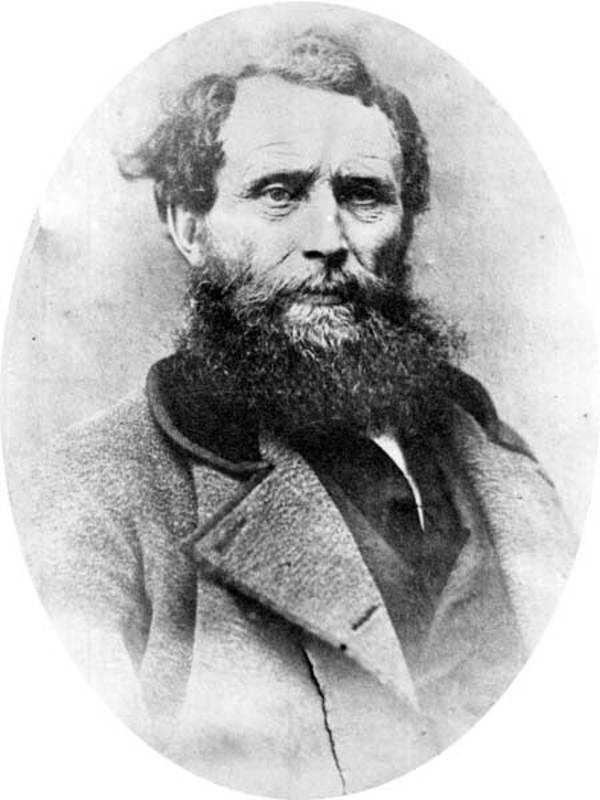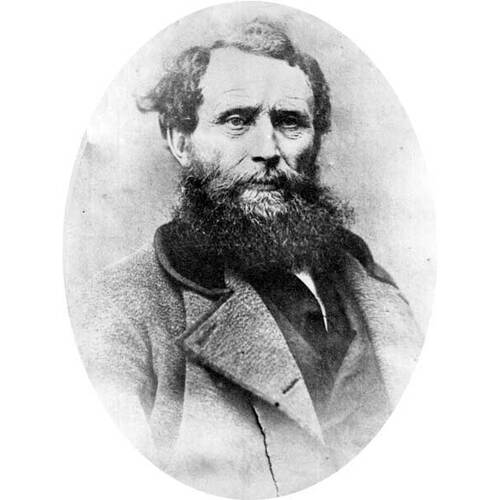
Source: Link
KENNEDY, WILLIAM, HBC fur-trader, sailor, explorer, and magistrate; b. in April 1814 at Cumberland House (Sask.), fifth child of Chief Factor Alexander Kennedy and his Cree wife, Aggathas; m. 29 Nov. 1859 in London, England, Eleanor Eliza Cripps*, and they had one son and one daughter; d. 25 Jan. 1890 at St Andrews, Man.
William Kennedy was sent to school in his father’s hometown, St Margaret’s Hope, Orkney Islands, in 1825; over the next eight years he was taught French as well as other subjects. In 1833 he joined the Hudson’s Bay Company and spent five years in the Ottawa valley, mainly at Fort Coulonge, Lower Canada. Transferred to the Ungava and Labrador area, he then served at forts Chimo, Trial, and Nascopie on Lake Petitsikapau (Labrador). Kennedy’s religious convictions led him to disagree with the HBC policy of selling liquor to the Indians and he resigned in 1846. He moved to Canada West, where he began a lobby against the HBC monopoly, arguing that the Province of Canada should be allowed to expand into Rupert’s Land. In 1848 he started a fishery at the mouth of the Saugeen River, and was thus one of the founders of Southampton, Canada West. From 1848 to 1850 he was captain of a boat on Lake Huron.
On the suggestion of ex-Chief Trader John McLean, Kennedy was accepted, in 1851, by Lady Franklin [Griffin*] as commander of her second private expedition in search of her husband Sir John Franklin*, whom Kennedy had met in 1819 at Cumberland House. Shortly before the expedition sailed, Kennedy was joined by Joseph-René Bellot*, a sub-lieutenant in the French navy; he had insisted on having Bellot as his second in command in spite of opposition from the British Admiralty. This Arctic expedition was the best prepared of any up to that time. Kennedy was well acquainted with the perils of the north after his service in Ungava and Labrador; he chose a nucleus of men experienced in the Canadian wilds, and he insisted his crew protect themselves with native clothing. His ship, the 89-ton Prince Albert, had a very shallow draught, making it a poor sea vessel, but it proved highly manoeuvrable in the Arctic ice.
In May 1851 the Prince Albert and its crew of 17 left Aberdeen, Scotland. In July, near Upernavik, Greenland, the expedition encountered the Advance and the Rescue which had been sent out under the command of Edwin Jesse De Haven* the previous year by New York merchant Henry Grinnell to search for Franklin. The three ships became locked in ice and Kennedy and Dr Elisha Kent Kane*, the medical officer of the American expedition, became friendly and later corresponded. Kennedy succeeded where the Americans had failed in penetrating Lancaster Sound into Prince Regent Inlet. Here Kennedy made use of blasting powder, which he had learned to use at the arsenal at Woolwich (now part of Greater London), in April 1851, to break through the ice.
In September, while attempting to reconnoitre Port Leopold on the northeast shore of Somerset Island, Kennedy and four men were separated from the Prince Albert by a shift in the ice which carried the ship south. Bellot put it into winter headquarters at Batty Bay. Unfamiliar with Arctic travel, he succeeded in reaching Kennedy only on a third attempt after Kennedy had been marooned for more than five weeks.
With the Prince Albert locked in the ice at Batty Bay, Kennedy, Bellot, and 12 crewmen set out at the end of February 1852 to explore the Boothia Peninsula area. After a stop at Fury Beach, the group continued south on 29 March and reached Brentford Bay on 5 April. Eight of the crewmen then returned to the Prince Albert, while Kennedy, Bellot, and the remaining four men headed southwest; on 7 April they discovered a new channel which Kennedy later named Bellot Strait. At this crucial time an error seems to have been made, perhaps because of snow-blindness, and the party did not explore Boothia Peninsula to the southwest as ordered, but moved west to Prince of Wales Island, crossing the frozen Peel Sound and Franklin Strait without realizing it. They returned safely to the Prince Albert on 30 May, having completed a journey of some 1,100 miles, and on 28 Aug. 1852 sailed from Beechey Island, arriving in Aberdeen about 40 days later. Although unsuccessful in his search for Franklin, Kennedy contributed to the knowledge of the Canadian Arctic and brought his crew back to Britain without the loss of a single man.
A second expedition under Kennedy supported by Lady Franklin was organized in 1853 to search the western and Russian Arctic via the Bering Strait. This mission was aborted when the crew mutinied in Valparaiso, Chile, and Kennedy had them jailed. Replacements were unavailable because of the impending Crimean War and Kennedy returned to Britain. When a third expedition did not materialize, he came back to Canada in 1856, living for a time in Toronto.
Kennedy joined the agitation for annexation of Rupert’s Land to Canada, resuming his lobby against the HBC. He wrote several articles on the “western question” for newspapers, and was associated with George Brown* who printed excerpts from at least one of his letters in the Globe. Kennedy became a director of the North-West Transportation, Navigation and Railway Company and made a journey from Toronto to the Red River Settlement (Man.) in February 1857 to prove the possibilities of the route, even in the worst weather. In Red River he circulated a petition requesting union with Canada which 575 settlers signed. The following year, Kennedy carried the first mail from Toronto to Red River for the North-West Transportation, Navigation and Railway Company, which held the contract from the Canadian government.
Kennedy settled permanently at Red River in 1860 where he built his home, the Maples, at St Andrews (the house is now the Red River House Museum). There he operated a store with his brother George. He became a member of the Board of Education of Manitoba in 1878 and a magistrate the following year. On 13 Feb. 1879 he read the first scientific address to the Historical and Scientific Society of Manitoba. During the 1880s Kennedy argued for a railway to Churchill (Man.) on Hudson Bay to break the monopoly of the Canadian Pacific Railway. A fighter to the end, he died on 25 Jan. 1890. In his eulogy of Kennedy, Canon Samuel Pritchard Matheson* said “he was a man who never got his due. While other men far less deserving received honour and emolument, he was passed over.”
William Kennedy was the author of A short narrative of the second voyage of the Prince Albert, in search of Sir John Franklin (London, 1853).
PAM, HBCA, A.12; B.38/a/7; C.1/806; MG 2, C1; MG 7, C12; MG 10, F2, Minutes, 1879. Scott Polar Research Institute (Cambridge, Eng.),
Cite This Article
Edward Charles Shaw, “KENNEDY, WILLIAM,” in Dictionary of Canadian Biography, vol. 11, University of Toronto/Université Laval, 2003–, accessed March 31, 2025, https://www.biographi.ca/en/bio/kennedy_william_11E.html.
The citation above shows the format for footnotes and endnotes according to the Chicago manual of style (16th edition). Information to be used in other citation formats:
| Permalink: | https://www.biographi.ca/en/bio/kennedy_william_11E.html |
| Author of Article: | Edward Charles Shaw |
| Title of Article: | KENNEDY, WILLIAM |
| Publication Name: | Dictionary of Canadian Biography, vol. 11 |
| Publisher: | University of Toronto/Université Laval |
| Year of revision: | 1982 |
| Access Date: | March 31, 2025 |



